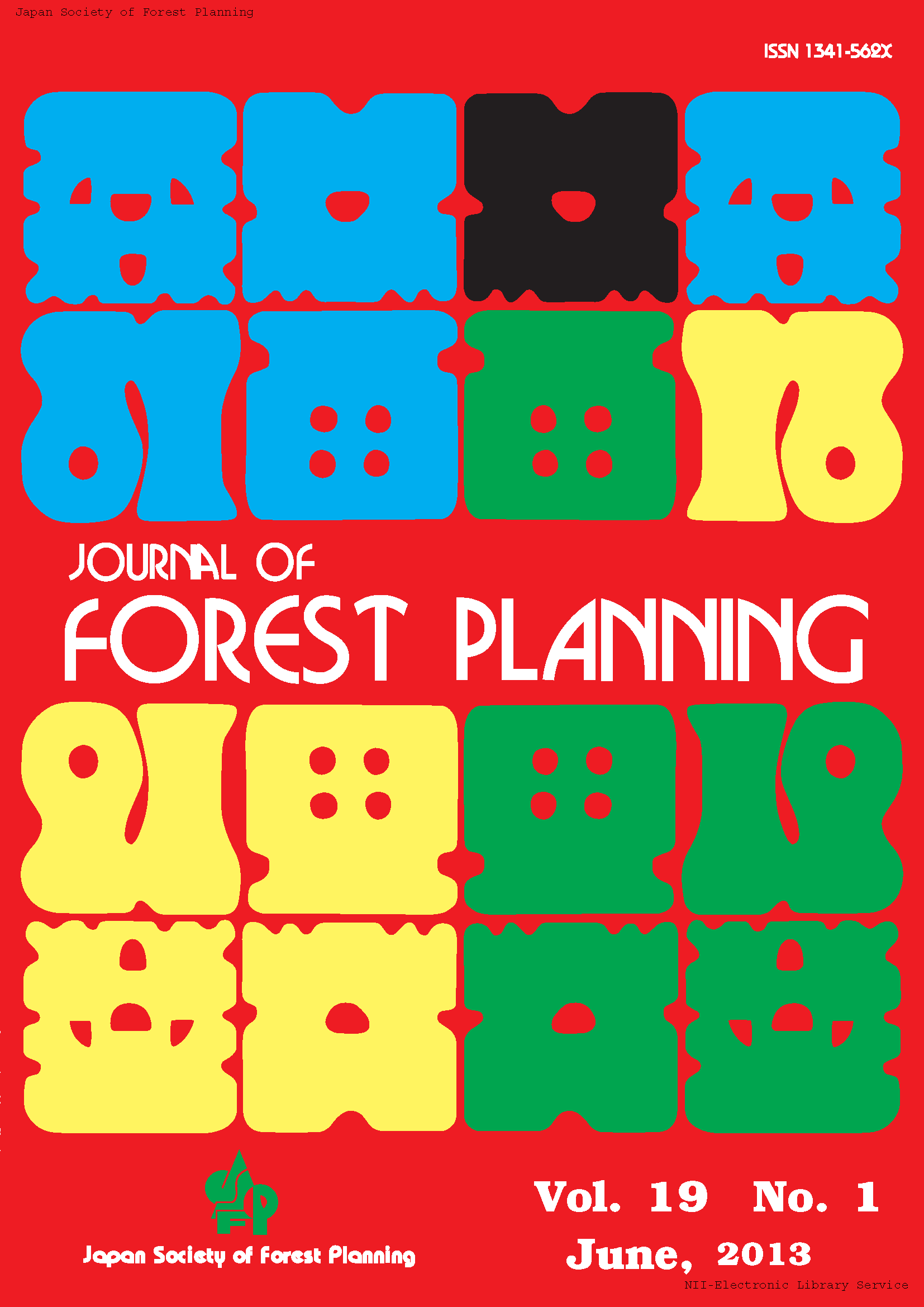Volume 19, Issue 1
Displaying 1-7 of 7 articles from this issue
- |<
- <
- 1
- >
- >|
-
Article type: Appendix
2013 Volume 19 Issue 1 Pages App1-
Published: 2013
Released on J-STAGE: November 01, 2017
Download PDF (99K) -
Article type: Appendix
2013 Volume 19 Issue 1 Pages App2-
Published: 2013
Released on J-STAGE: November 01, 2017
Download PDF (99K) -
Article type: Index
2013 Volume 19 Issue 1 Pages Toc1-
Published: 2013
Released on J-STAGE: November 01, 2017
Download PDF (78K) -
Article type: Article
2013 Volume 19 Issue 1 Pages 1-7
Published: 2013
Released on J-STAGE: September 01, 2017
Download PDF (288K) -
Article type: Article
2013 Volume 19 Issue 1 Pages 9-16
Published: 2013
Released on J-STAGE: September 01, 2017
Download PDF (331K) -
Article type: Article
2013 Volume 19 Issue 1 Pages 17-26
Published: 2013
Released on J-STAGE: September 01, 2017
Download PDF (295K) -
A Method for Estimating the Stand Density in an Even-aged Pure Stand Using Hemispherical PhotographyArticle type: Article
2013 Volume 19 Issue 1 Pages 27-29
Published: 2013
Released on J-STAGE: September 01, 2017
Download PDF (243K)
- |<
- <
- 1
- >
- >|
